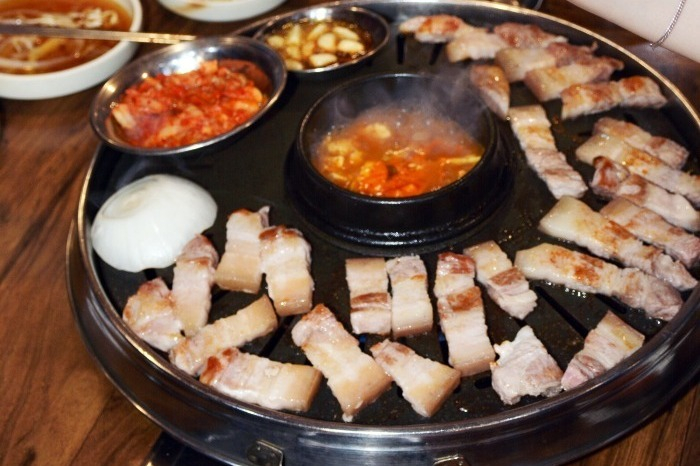Korean food
Koreans’ voracious appetite for pork belly extends to Canadian pork market
South Korea’s pork imports from Canada in 2022 jumped 37% on-year
By Feb 20, 2023 (Gmt+09:00)
2
Min read
Most Read
LG Chem to sell water filter business to Glenwood PE for $692 million


Kyobo Life poised to buy Japan’s SBI Group-owned savings bank


KT&G eyes overseas M&A after rejecting activist fund's offer


StockX in merger talks with Naver’s online reseller Kream


Mirae Asset to be named Korea Post’s core real estate fund operator



As South Korea prepares for Samgyeopsal Day, or Pork Belly Day, on March 3, the country has further upped pork imports from Canada – this after Korea already exported nearly 40% more pork last year than it did the year previous.
According to the Korea Customs Office on Sunday, pork imports from Canada surged 37.7% to 60,451 tons in 2022 from 43,894 tons in 2021.
Pork imports from Spain and the US still made up more than 50% of the country’s overall pork imports but those from Canada really took off during the COVID-19 pandemic.
Canadian pork is gaining in popularity among Korean consumers largely because of its cheaper price than local pork. Canadian pork belly is sold at 1,380 won ($1.07) per 100 grams at Homeplus, a major Korean big-box supermarket chain operator, versus 2,290 won for the same amount of Korean pork belly.
The Canadian meat is also barley-fed pork, making it more popular among Korean moms looking for quality, tastier meats. Homeplus saw Canadian pork sales more than triple on-year to 3,650 tons last year.
Korean retailers also decided to add Canadian pork to their meat suppliers’ list as part of efforts to diversify their import sources in response to the spike in import pork prices, driven by the galloping commodities prices from the Russia-Ukraine war on top of the pandemic-driven persistent shipping bottlenecks.
Canadian pork imports to Korea jumped especially after the Korean government temporarily removed its 8.6% tariff on Canadian pork in July of last year in a bid to control consumer inflation.
Local retailers have recently scrambled to bring in more Canadian pork, as Samgyeopsal Day approaches.
Samgyeopsal is pork belly in Korean. As its first syllable sounds like "sam," which also means "three" in Korean, local retailers and restaurant owners have been promoting March 3, which is "Sam-wol Sam-il" in Korean, as Samgyeopsal Day to encourage consumers to eat more pork belly, which is already the most popular pork cut among Koreans.
Korea imported 442,372 tons of pork in total in 2022, of which the largest chunk of 172,474 tons was pork belly, followed by arm shoulder and hock with 164,405 tons, according to data from the Korea Meat Trade Association.
Homeplus has already secured 500 tons of Canadian pork to be ready for a possible surge in pork belly purchases ahead of Samgyeopsal Day on March 3.
Write to Jong-Kwan Park at pjk@hankyung.com
Sookyung Seo edited this article.
More to Read
-

-

-
 Travel & LeisureKorean hotels bask in rising foreign visitors; travel agencies in trouble
Travel & LeisureKorean hotels bask in rising foreign visitors; travel agencies in troubleApr 22, 2025 (Gmt+09:00)
-
 Beauty & CosmeticsPackaging rides K-beauty wave: Shares of cosmetics container makers soar
Beauty & CosmeticsPackaging rides K-beauty wave: Shares of cosmetics container makers soarApr 21, 2025 (Gmt+09:00)
-
 Food & BeverageIndia: Tantalizing frontier for K-food’s global ambitions beyond China
Food & BeverageIndia: Tantalizing frontier for K-food’s global ambitions beyond ChinaApr 18, 2025 (Gmt+09:00)
Comment 0
LOG IN


